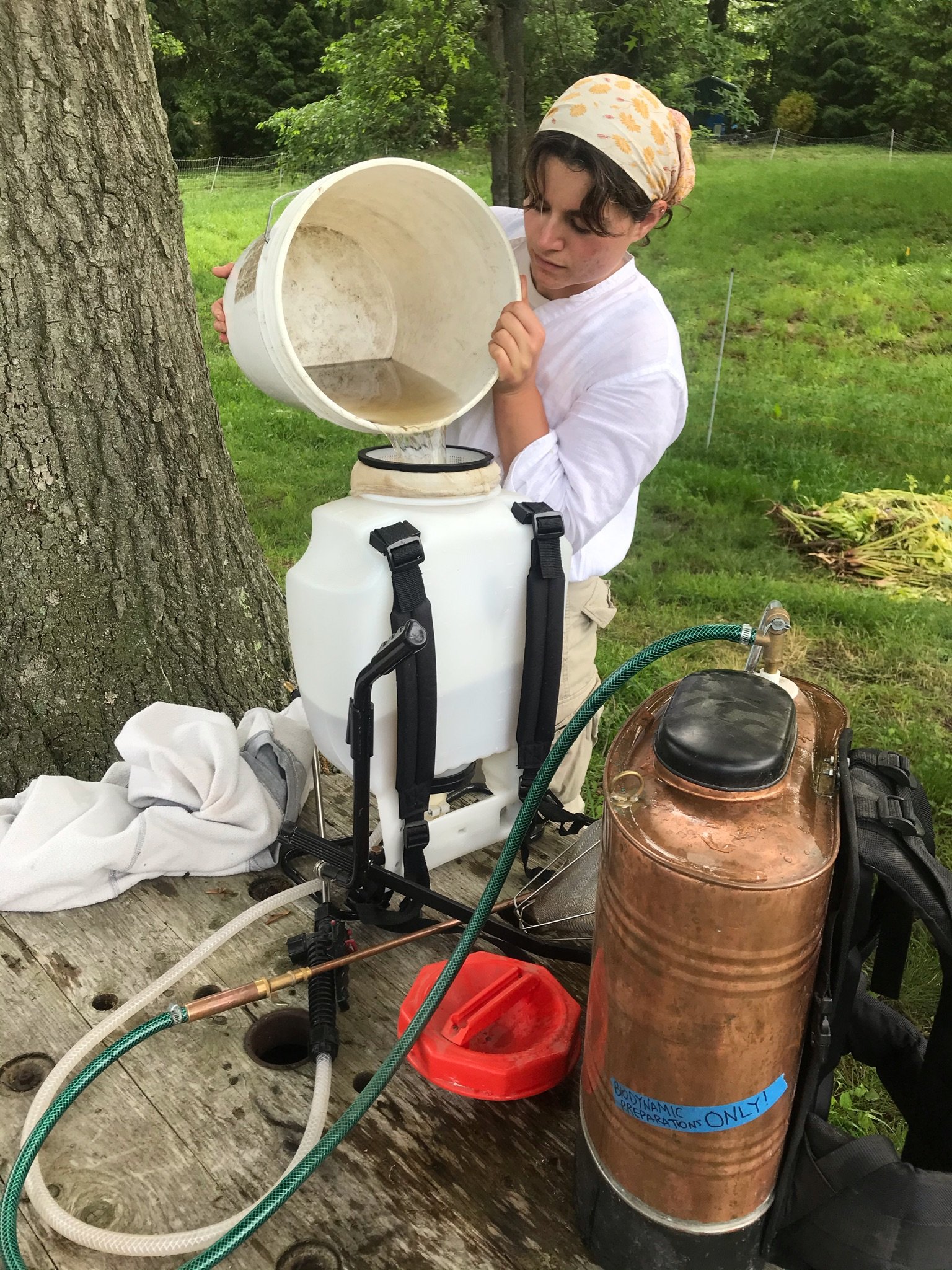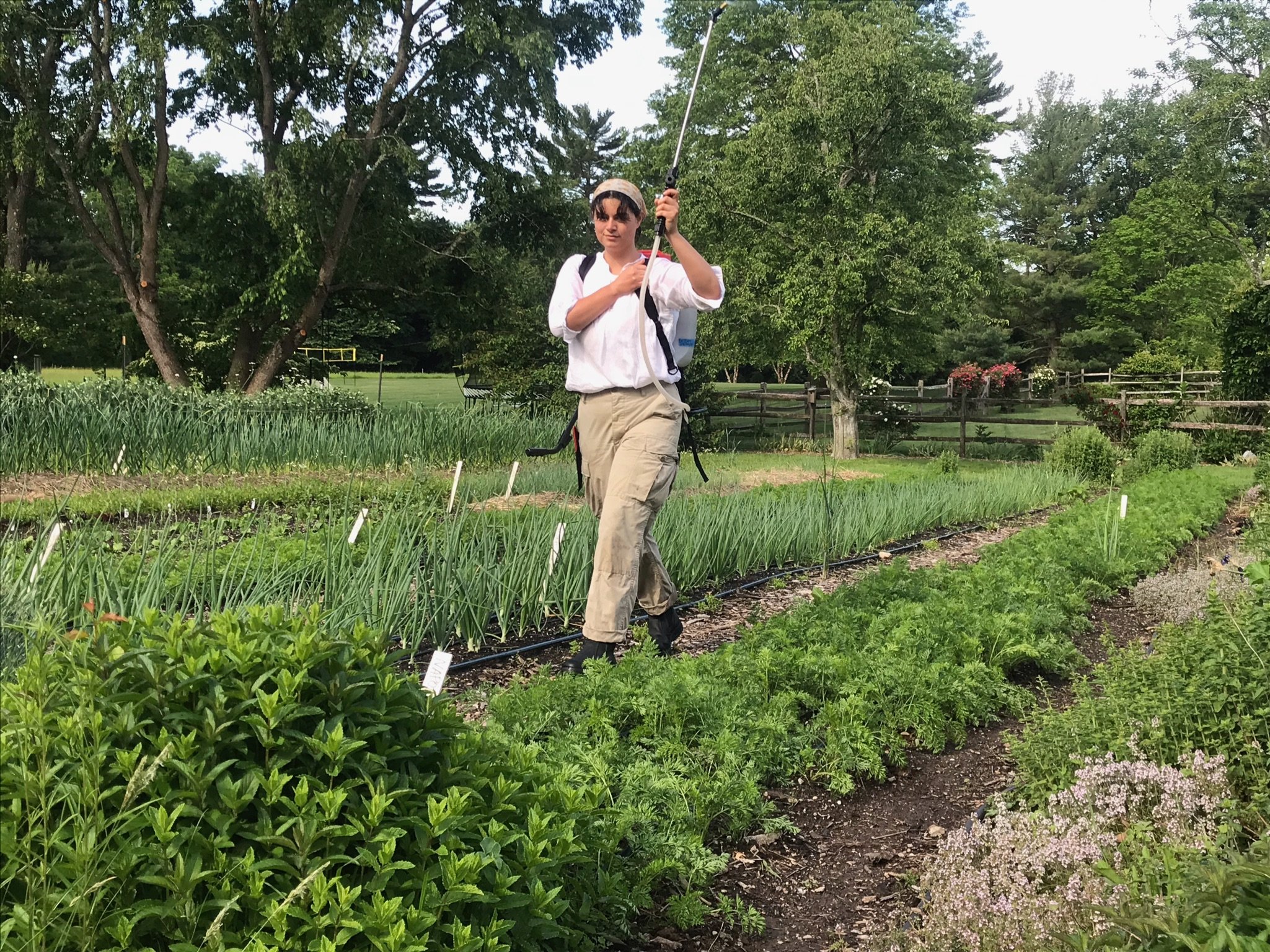BD501
Last month, we talked about biodynamic preparation 500 - or BD500 - a special sort of “horn manure,” a rich and potent preparation that enlivens the microbiological ecosystem of our farm, enhances soil structure, organic matter decomposition, and carbon sequestration. Today we’re going to look at its counterpart, BD501 aka “horn silica” - a preparation that at first glance seems to be the opposite of BD500 in every way. Yet, the two preps work together to create a harmony of terrestrial and cosmic energy that our farm benefits greatly from. If you haven’t had a chance yet to read our previous post, be sure to check it out first, as many of the ways we prepare and apply BD501 are quite similar and explained in more detail there.
While BD500 works with earthly energies, BD501 is all about capturing the energy of the cosmos - particularly the life-giving rays of the sun through silica. Silca is abundantly found throughout the Earth’s crust in rocks, sands, and clays, and it is found in very fine form in the atmosphere as well! Plant tissues, animal and human bodies contain silica, especially in our nervous system, our skin, and our eyes, which allows us to sense the world around us. BD501 assists the photosynthetic process of plants, strengthening their immunity and metabolism, enhancing the flavor, aroma, and storability of fruits.
Like BD500, BD501 is packed into a cow’s horn and buried. It’s important to source the purest quartz you can find. Look for crystal that is clear, letting as much light shine through as possible, avoiding the opaque, milky kind that is very common. This is because the atomic structure and surface area of pure quartz is optimal for radiating the sun’s rays. The crystals are ground into a very fine powder. As you can imagine, crystal is quite tough, so this can be a workout. It’s best to break it apart into large chunks first, then meticulously grind it with a mortar and pestle. You’ll know it’s ready when the consistency of the quartz has become as fine as talcum powder. It’s then combined with pure, clean water - preferably rain water - to form a thick paste.
Then, just as we do with the manure to make BD500, the horns are filled with the quartz paste and buried underground. This is another aspect where BD501 is opposite but complementary to BD500: while the manure is buried through the fall and winter, our quartz preparation will go into the ground in spring to absorb the summer’s warmth and light captured through the earth.
Now it’s the beginning of autumn and it’s time to unearth our silica prep. Contrasting again with BD500 - which is stored in cool, dark conditions surrounded by peat moss - BD501 is best kept in transparent glass containers placed in a well lit area. We store ours in the window sill of the chicken coop. When it is time to spray, after a period of prolonged rain or clouds and high humidity, we stir the preparation with warm rainwater, using the vortex method discussed in our previous post. As 501 is all about harnessing the energy from light to balance plant growth, we want to apply it very early in the morning, as the sun is just beginning to rise, the blanket of mist is lifting, and the birds are chirping, so as to capture the entire day’s sunlight. For best results, we try - as much as possible - to schedule the spraying of 501 to happen on a flower day during the ascending moon. In doing so, we keep the farm and ourselves playing in tune with the larger context of nature.
When we spray 501, opposite to 500, we do so reaching up high with the sprayer and producing a fine mist that will fall and lay delicately and evenly upon leaves, rather than aimed down at the soil. It’s effect is something similar to a magnifying glass, concentrating the sun’s rays into the plant’s photosynthetic process. For this reason, the day you choose to spray is important. While you want to choose a clear day where the sun is unimpeded, you should also avoid hot days when the rays are too intense as in the middle of summer, since this may damage the plants; a classic case of too much of a good thing! For the same reason, avoid spraying on plants that are flowering, as the flowers are the delicate reproductive organs of plants and can be detrimentally affected. Focus on plants that are in their leaf stage or fruiting. This will enhance the concentration of flavors, with the ripening processes, and the plant’s ability to form sugars and store nutrients.
Spraying BD501 can be a labor intensive and physically challenging task, particularly in the very early hours it requires one to wake up to begin stirring! However, if applied correctly, it’s effect is worth the effort, visible in the uprightness of the plants and the quality of the fruit - the farm’s sweet way of saying thanks!
Be sure to check back with our blog, as in the future we’ll be discussing more details about biodynamics like other BD preparations - there are still seven more! Also, we’ll finally get to the bottom of why we bury these two preparations in cow horns. In the meantime, happy farming!


